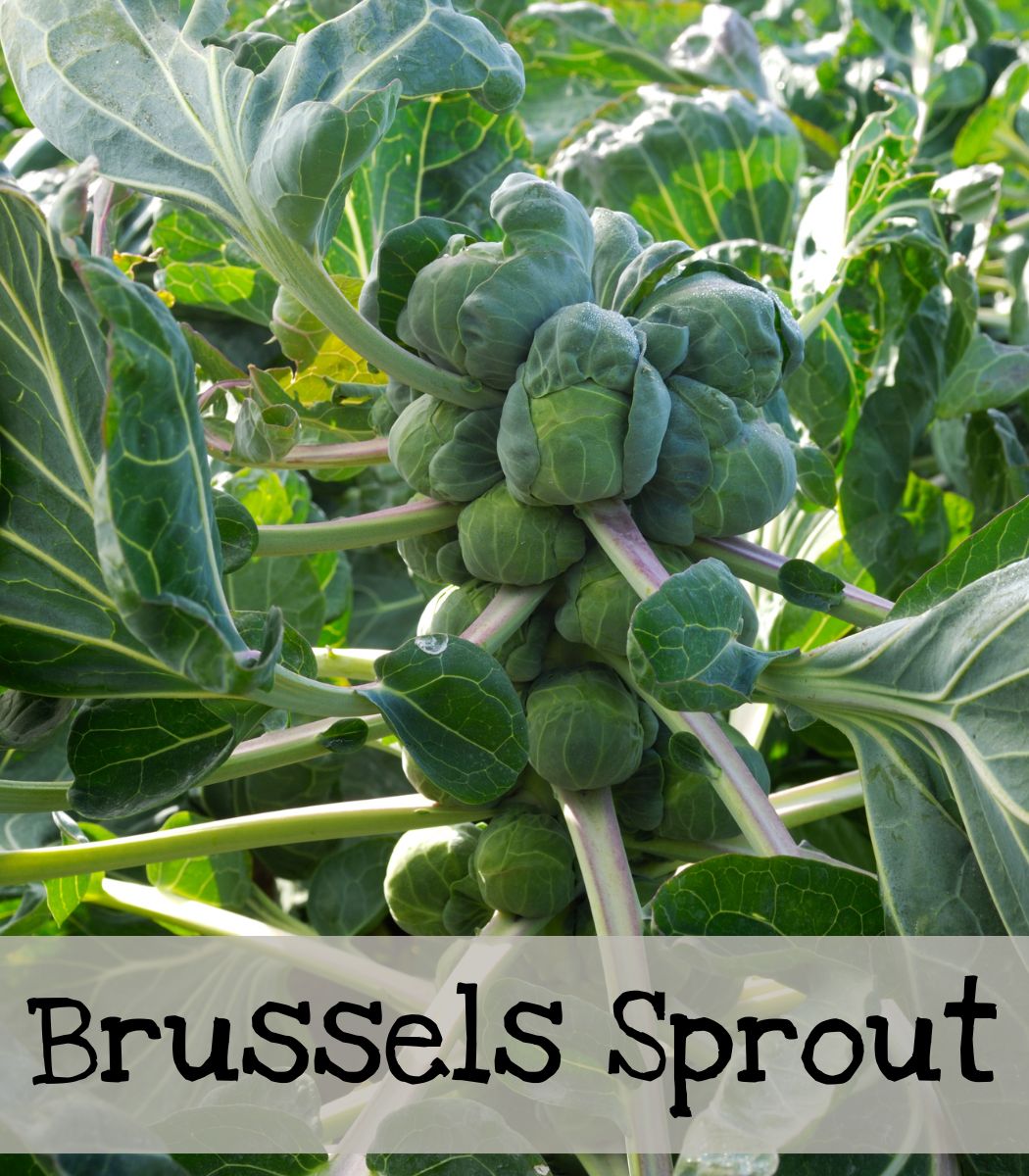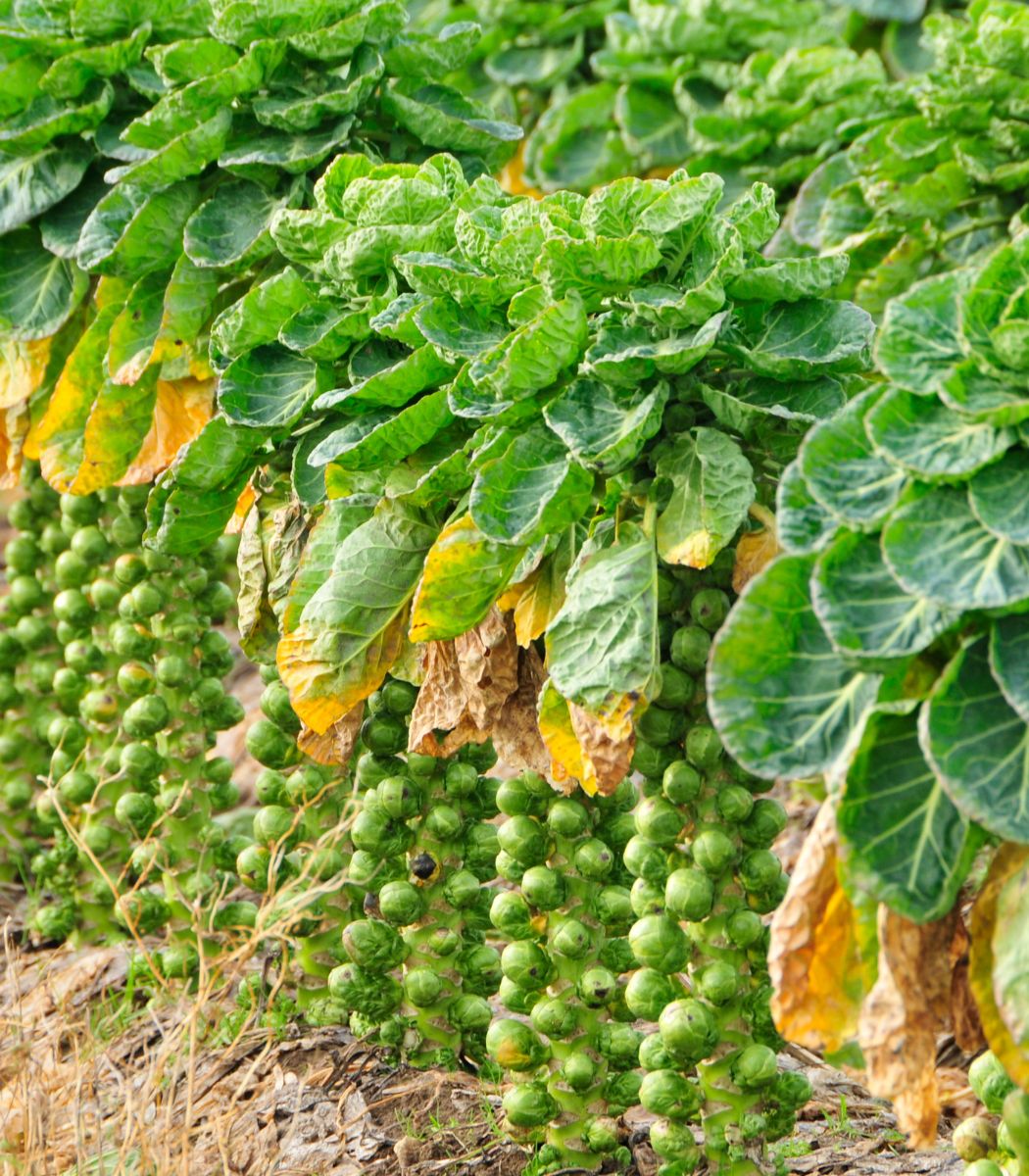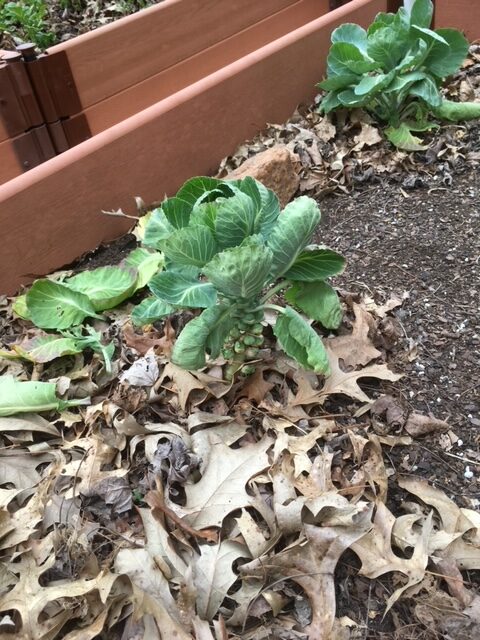
Brussels Sprout
A member of the Brassica family, the Brussels sprout is the bud of the plant. This bud resembles a small cabbage. It often gets a bad rap, but when cooked properly it is not just nutritious, but delicious.
|
Catskill; Long Island Improved; Red Rubine |
|
Brassica oleracea |
|
Difficult for GA |
|
Intermediate to Difficult |
|
3-5 years if properly stored |
|
Biennial |
|
7-10 days |
|
50-75 F |
|
None |
|
1/4 – 1/2 inches |
|
Full sun |
|
Catskill: 85-110 days Long Island Improved: 90 days Red Rubine: 90 days |
|
Special Seed Library Event: January August |
|
Yes |

Growing Tips
 For GA
For GA
When to Start
Very Early Spring: Start indoors in very early spring. Harden off seedlings after the chance of HARD frost has passed. They still need to experience some frost. (My best guess based on other brassica starts for GA: January – Mid-February for Jefferson, GA)
Spring Transplant: After the chance of HARD frost has passed. (My best guess based on other brassica starts for GA) Mid-February for Jefferson, GA
Fall: For fall harvests, start indoors in LATE summer. (My best guess is based on other brassica starts for GA) Aug 15 – Sep 1 for Jefferson, GA
Fall Transplant: Ruffly 10-12 weeks before the first frost. (My best guess is based on other brassica starts for GA.) Sep 1 for Jefferson, GA
Special note for GA growers
The UGA Extension found growing Brussels in GA is rather difficult.
Georgia’s hot summers and warm early-fall temperatures – and the intensive labor required to grow and harvest Brussels sprouts – make growing the crop too risky for Georgia farmers.
Although they are a cold-tolerant crop, University of Georgia Cooperative Extension research has found that, in order to grow to maturity, Brussels sprouts would have to be planted in late summer, when temperatures are too high. –newswire.caes.uga.edu
Home gardeners might have more luck growing Brussels in GA provided that they first choose a Brussels that matures more quickly and second, they are started indoors where temperatures are cooler. Third, keep them indoors until it is cool enough for them to be transplanted in the fall.
How to Grow
Brussels need a relatively low germination temperature. Their ideal germination temperature ranges from 50-75 F. When starting indoors, you will need a cool place for them to start life. Fill cells or pots with pre-moistened seed starting mix. Sow seeds to a depth of 1/4 – 1/2 inches. If your grow lights put out a lot of heat, wait until they have germinated to place them under the lights.
Direct sowing is really not recommended for GA. If you live in a cooler area, you can direct sow in very early spring or in the fall. Soil temperatures should be in the 50-75 F range when sowing. Sow seeds to a depth of 1/4 – 1/2 inches.
Care
Brussels sprouts like other brassicas like rich, well-draining soil. However, they will tolerate a variety of soils. They need full sun and cooler temperatures. These plants do not do well once highs reach 75 F and above and will become bitter. This will make spring and fall plantings in GA more difficult. Starting the seeds indoors for later transplants will give your Brussels the best chance of thriving for both planting times.
Space the plants 15-18 inches apart with 30 inches between rows. These plants are heavy feeders and will need fertilizer at the time of transplant and several times throughout their growing season. Side dressing with mature or compost will be beneficial to keep the plants producing.
Brussels need moist soil that isn’t soggy, especially to help them get established. This water will help keep the soil cooler, which they need. A thick layer of Mulch is essential to help keep the soil cooler too, as well as, to retain moisture.
Harvest
When the plants reach 24 inches tall, pinch back the top to force the plant to start forming sprouts.
Brussels sprouts plants look like collard plants until little sprouts emerge where leaves come out of the plant. To help the plant produce sprouts, workers must cut the tops of the plants to force the plant to put resources into sprout production.
Workers must remove the plants’ leaves through a process called “kiting.” This allows energy to move into the sprouts instead of leaf production and increases airflow to the plants, which reduces disease pressure. –newswire.caes.uga.edu
Brussels are cold hardy and can withstand freezes. In fact, they are best when harvested after a frost. The sprouts will be sweeter after a touch of frost. You can leave them on the stocks and harvest them throughout the winter. Cut the sprouts off the stock starting at the base and work your way up.

Companion plants
Cabbage worm is a particular problem with Brussels. Rareseeds.com recommends interplanting with thyme as cabbage worms don’t like the smell of thyme. Creeping thyme might work better over other varieties. They also suffer from many of the same pests as other brassicas. See pest management below.
Pro Tip!
Incompatibles: Kohlrabi, beans, tomatoes
Grows well with: Artichoke, beets, peas, potatoes, and spinach
My personal experience
Since I enjoy crispy, pan-fried Brussels, I thought I’d try growing them. It didn’t turn out well! I know from first-hand experience how hard they are to grow in GA! Only one of my plants produced Brussels and they didn’t get much bigger than what you see in the picture. I didn’t get to harvest anything! Even though I started at the right time for fall plantings, I think the heat got them!
When I get cold frames up, I might try again. I’m also better equipped to keep seedlings indoors longer than I was then. It would still be a challenge, but oh, how good they would taste!

Seed Saving


Isolation Distance
Brussels sprouts are biennial and insect-dependent for pollination. Separate varieties by 1 mile. Or bag blooms and hand-pollinate.
Instructions
Brussels Sprouts requires vernalization (the process of overwintering). Designate a particular plant or plants for seed harvest.
Plants will bloom in the 2nd year. Dig up the seed plants at the end of the first growing season if the winter falls below 32 F. In this case, replant them in pots of sand. Store the sand pots over the winter in a temperature range between 32-40 F. The following spring, transplant the seed Brussels back into the garden. You MIGHT be able to get away with leaving them in the ground in GA. Mulch heavily and cover if temps get below freezing.
Let seed pods mature and dry on the plants before harvesting, or the seeds will not be fully mature. Harvest quickly after drying, as the pods often shatter and drop their seeds soon after they dry.
Strip the pods from the stalks and place them in a bowl. Work through the bowl of seed pods with your fingers. The pods will easily open, releasing the tiny seeds.
Winnow the chaff. Seeds and finer chaff are easy to separate by a variety of methods. One way is to use two screens of varying mesh, one a little smaller than the seeds and the other a little larger. The first screen lets anything smaller than the seeds fall through, and the second lets the seeds through and stops anything larger.
Features
- Cold Hardy
- Frost tolerant
- Colorful
- Catskill: Heirloom. 85-110 days. It produces high yields of 2-inch sprouts that freeze well.
- Long Island Improved: Heirloom with heavy yields. Been around since the 1890s.
- Red Rubine: Heirloom. Purple-red sprouts that have a sweet flavor after a touch of frost.

Home gardeners might have more luck growing Brussels in GA provided that they first choose a Brussels that matures more quickly and second, they are started indoors where temperatures are cooler. Third, keep them indoors until it is cool enough for them to be transplanted in the fall.
